Joachim's Ko-Semeai - Putting the Cart
Before the Horse (2013 - 2015)
4b - White Starts the Ko "Early"
|
( (Referenced by What about the "early" ko for White? This will be White's last hope for success in the sub-variation with Let us assume that Black did neither play the three hasami-tsuke moves in the upper right ( |
|
!!! Let us further assume a "very early" start of the ko-fight by White, combined with a "peaceful", and "uncomplicated", continuation (this means that White will not pre-empt any of Black's ko-threats shown). !!! |
|
White has allowed Black to get all the moves We suppose that we are on the "safe" side with our analysis, when we give Black (nearly) everything that he wants to have. |
|
In principle, there is the Hanezeki Exchange of White needed to play the two move-pairs of Let us assume that the ko-threats are independent from each other (what they are not really in the problem). Even if Black starts the exchanges (what he really did in the sequence above), we will get the following sequence (exemplary; you might interchange the Black moves as you like):
Please note that it is White's turn now. This implies that White could "steal" Black another ko-threat, if there was any. This means that Black really needed seven ko-threats, versus White's two, for success with the "early" start of the ko-fight. |
|
Black's earlier move at |
|
|
|
|
|
|
|
|
|
|
|
///:
|
|
|
|
|
|
|
|
Black's initially played move, at |
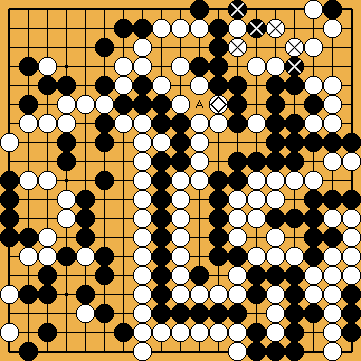
 980
980 140
140 .
. /
/  ), nor the throw-in in the centre (
), nor the throw-in in the centre ( /
/  ).
).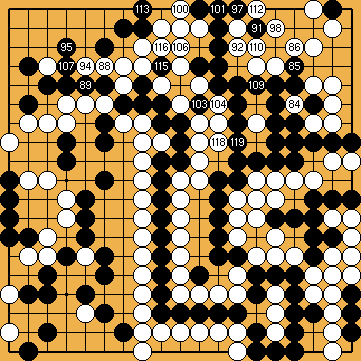
 ;
;  ;
;  ;
;  ;
;  ;
;  ;
;  ;
;  ;
;  ;
;  ;
; 
 :
: 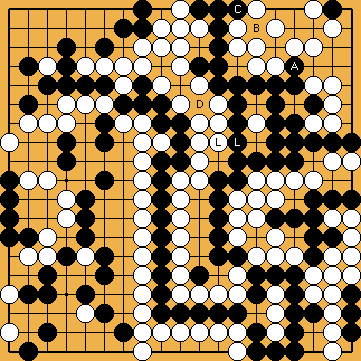
 as ko-threats, which he kept in reserve. Additionally, White allowed Black's larger eye, with the
as ko-threats, which he kept in reserve. Additionally, White allowed Black's larger eye, with the  /
/  moves.
moves.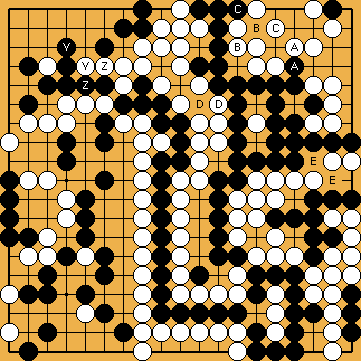
 /
/  left, and you might wonder, whether Black might get another ko-threat there (which would be the key for winning).
left, and you might wonder, whether Black might get another ko-threat there (which would be the key for winning). /
/  , and
, and  /
/  .
. to
to  /
/  /
/  (pre-empts a Black ko-threat) /
(pre-empts a Black ko-threat) / 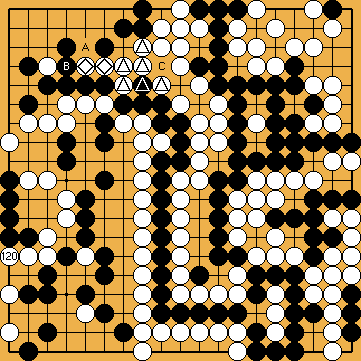
 :
: destroyed the connection of White's
destroyed the connection of White's  -stones, but left White's group with two outside liberties (one more than without
-stones, but left White's group with two outside liberties (one more than without  . This gained liberty enables White to play a protective move on the left side, reducing Black's potential ko-threats in the nakade to only two ko-threats remaining. It has been shown earlier that Black has no chance to pre-empt this reduction of ko-threats in the nakade (
. This gained liberty enables White to play a protective move on the left side, reducing Black's potential ko-threats in the nakade to only two ko-threats remaining. It has been shown earlier that Black has no chance to pre-empt this reduction of ko-threats in the nakade (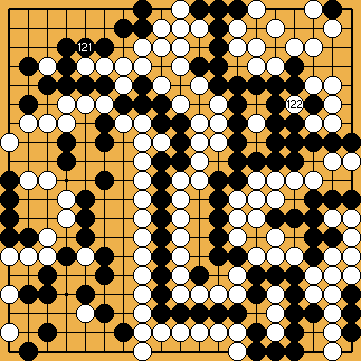
 :
: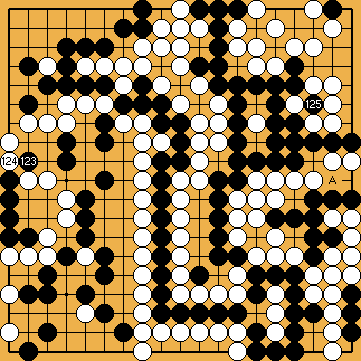
 :
: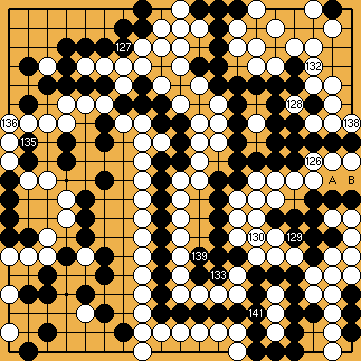
 ;
;  ;
;  ;
; 
 :
: , to get a similar result.
, to get a similar result.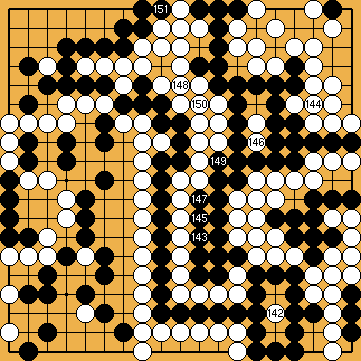
 :
: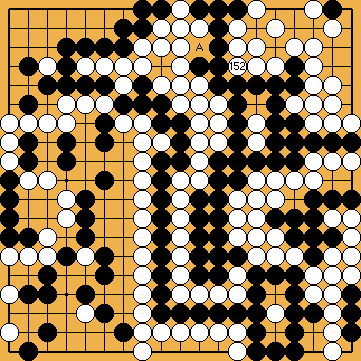
 :
: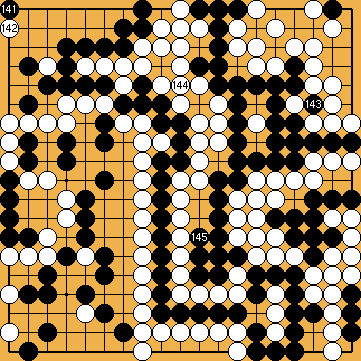

 :
: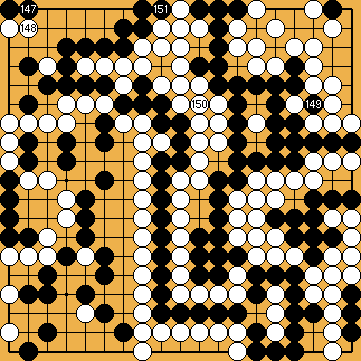
 :
: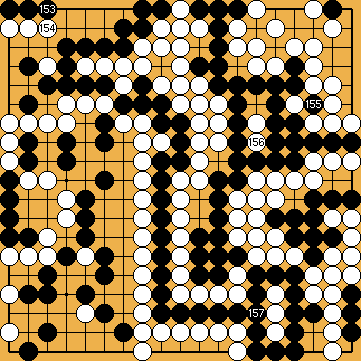
 :
: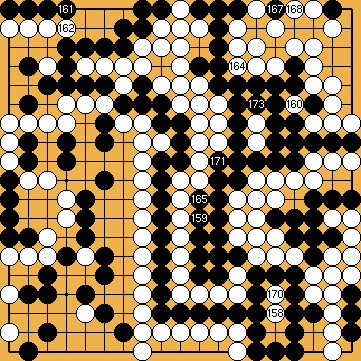
 ;
;  ;
;  ;
; 
 :
: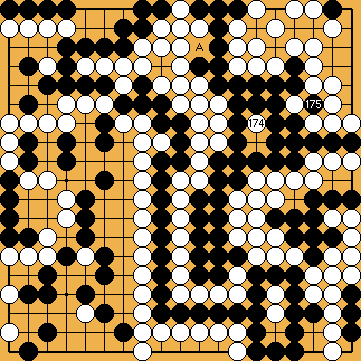
 :
:
